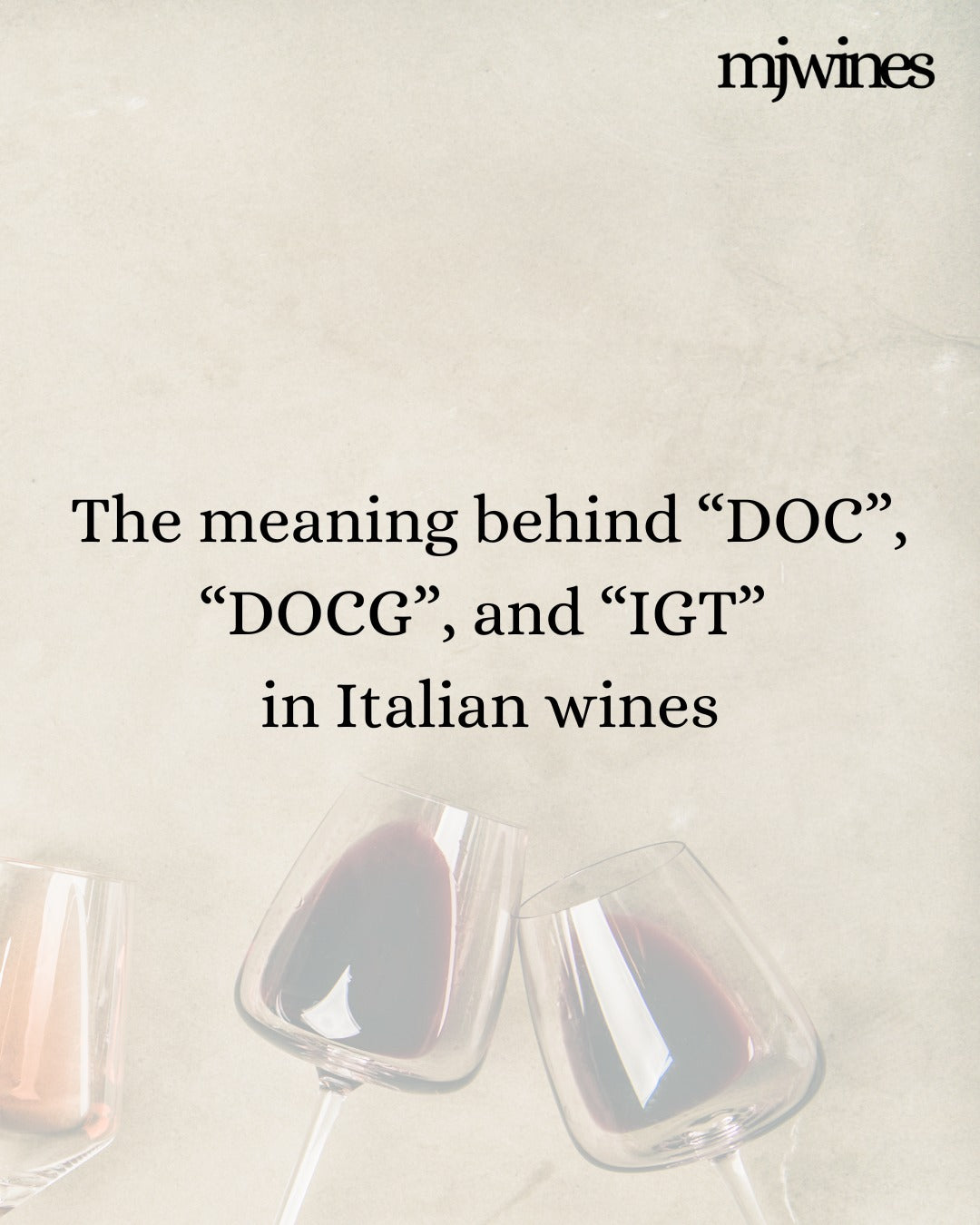
What's the difference between DOCG, DOC and IGT?
Italy is renowned for its wine culture, boasting some of the finest wines globally. To help consumers understand the quality and origin of these wines, Italy has established a classification system that includes DOCG, DOC, and IGT designations. Each classification represents a different level of quality, regulation, and geographical specificity.

DOCG: Denominazione di Origine Controllata e Garantita
DOCG stands for "Denominazione di Origine Controllata e Garantita," translating to "Denomination of Controlled and Guaranteed Origin." This is the highest classification for Italian wines and is reserved for those that meet the strictest standards.
Characteristics of DOCG Wines
Quality Assurance: DOCG wines undergo rigorous testing for quality and authenticity. This includes chemical analysis and tasting by government-approved committees.
Geographical Precision: These wines must come from a very specific geographical area known for its superior wine production. The boundaries are strictly defined to ensure consistency.
Production Standards: DOCG wines must adhere to stringent production rules, including specific grape varieties, yield limits, and aging requirements.
Seal of Guarantee: Every bottle of DOCG wine is sealed with a numbered governmental seal, ensuring traceability and authenticity.

DOC: Denominazione di Origine Controllata
DOC stands for "Denominazione di Origine Controllata," meaning "Denomination of Controlled Origin." This classification is one step below DOCG but still represents high-quality wines with specific regional characteristics.
Characteristics of DOC Wines
Controlled Standards: DOC wines must meet specific standards regarding grape variety, production methods, and geographical origin.
Regional Identity: These wines reflect the traditional winemaking practices and terroir of their respective regions.
Less Stringent Than DOCG: While DOC wines are subject to quality controls, the regulations are less stringent compared to DOCG wines.

IGT: Indicazione Geografica Tipica
IGT stands for "Indicazione Geografica Tipica," translating to "Typical Geographical Indication." This classification offers more flexibility and is designed to promote the diversity of Italian wines.
Characteristics of IGT Wines
Flexibility: IGT wines have fewer restrictions regarding grape varieties, production methods, and aging requirements. This allows winemakers to experiment and innovate.
Regional Indication: While these wines indicate a broader geographical area, they still reflect regional characteristics.
Quality Range: IGT wines can vary widely in quality, from everyday table wines to exceptional products that rival DOC and DOCG wines.
Conclusion
Whether you are a seasoned wine connoisseur or a curious novice, exploring these classifications can lead you to discover some of Italy's finest wines, each with its own unique story and character. Cheers to your next Italian wine adventure!
